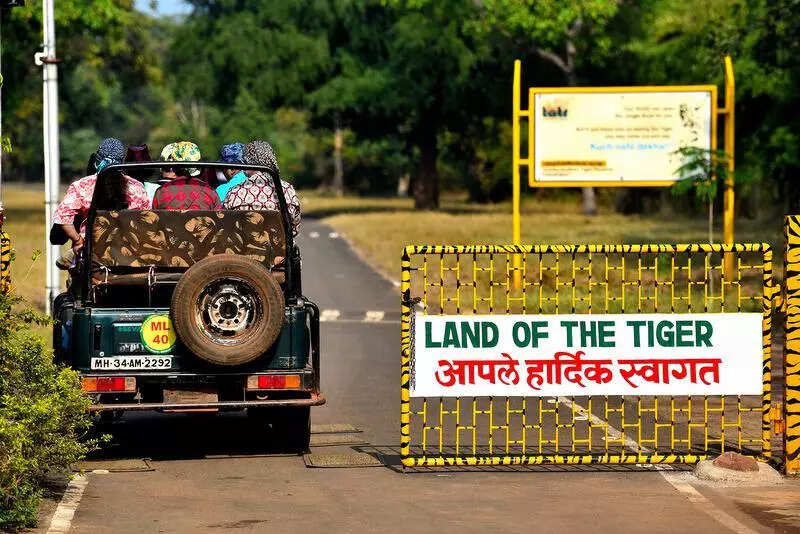
In a significant ruling aimed at strengthening tiger conservation and preventing further ecological damage, the Supreme Court has held that tiger safaris cannot be established inside forest areas of tiger reserves and may be set up only on non-forest land or degraded patches of buffer zones, provided these areas do not fall within tiger corridors. The direction forms part of a detailed judgment delivered in the Corbett Tiger Reserve matter, arising out of illegal construction and tree felling linked to the proposed Pakhrau Tiger Safari in Uttarakhand.
The Court, led by Chief Justice B R Gavai, accepted the recommendations of an expert committee constituted in March 2024 to examine regulatory, ecological and governance frameworks for tiger safaris across India. The committee concluded that forested buffer areas are integral to tiger dispersal and therefore unsuitable for safari infrastructure. It advised that safaris must operate only from non-forest areas and strictly in association with a rescue and rehabilitation centre meant for conflict, injured or orphaned tigers.
Accordingly, the Court ruled that tiger safaris are prohibited in core or critical tiger habitats and may be allowed only on non-forest or degraded buffer land that does not obstruct natural tiger movement. It also reiterated its earlier position that animals for safaris cannot be sourced from zoos; only rescued tigers from the same landscape may be housed, strictly in line with the 2016 guidelines.
Severe environmental damage recorded at Corbett
For Corbett Tiger Reserve, the expert panel assessed extensive environmental degradation from construction activities undertaken in the name of creating a safari at Pakhrau. The committee’s field inspection found approximately 118 hectares of ecosystem damage, recommending demolition of illegal structures, restoration of hydrological flows and ecological rehabilitation. The monetary valuation of ecological loss was pegged at about Rs 29.8 crore, including Rs 6.8 crore as notional timber value. The restoration cost alone was estimated at around Rs 4.3 crore.
The Court directed that Uttarakhand recover the quantified damage cost from delinquent forest officers once identified through ongoing criminal and departmental proceedings. It mandated that all recovered funds be placed in a dedicated account for ecological restoration in Corbett, with compliance reporting to the Central Empowered Committee.
Operational and tourism restrictions tightened across all tiger reserves
The ruling lays down a new, pan-India regulatory baseline for tiger reserves. The Court accepted recommendations prohibiting a wide range of activities in buffer and fringe zones, including mining, low-flying tourism aircraft, release of pollutants, and introduction of exotic species. Tourism infrastructure, where permitted, must avoid wildlife movement corridors, comply with Eco-Sensitive Zone norms and be limited to eco-friendly facilities on non-forest land.
New resorts cannot be located along tiger corridors, and night tourism in core areas must be completely banned. Tiger reserves and surrounding ESZs are to be notified as silence zones, and mobile phone use is to be restricted in core tourism zones to minimise disturbance to wildlife. Vehicular carrying capacities are to be strictly enforced, while night-time traffic across critical tiger habitat roads must be curtailed, except for emergency vehicles.
Mandatory preparation of Tiger Conservation Plans within six months
In a major push for improved governance, the Court directed all states to prepare or update Tiger Conservation Plans within six months. It also sought the establishment of high-level steering committees in each reserve, chaired by the Chief Minister and mandated to meet at least twice annually. Funding under centrally sponsored schemes may be linked to compliance.
The ruling also calls for substantial human-resource strengthening across reserves, phasing in provision of firearms to frontline forest staff, formation of specialised wildlife crime units, and creation of rapid-response teams for human-wildlife conflict.
A landmark conservation reset
The Court emphasised that tiger reserves must be managed with an ecocentric, not anthropocentric, approach. Stressing India’s international commitments and constitutional obligations, it reaffirmed that ecological restoration is a core principle guiding judicial intervention in environmental matters.
By limiting tiger safaris strictly to non-forest and non-corridor land, the ruling effectively resets the operational framework for tourism and infrastructure development around tiger reserves. It places Corbett at the centre of a broader national effort to reverse ecological damage, strengthen governance, and ensure long-term protection of India’s tiger landscapes.


